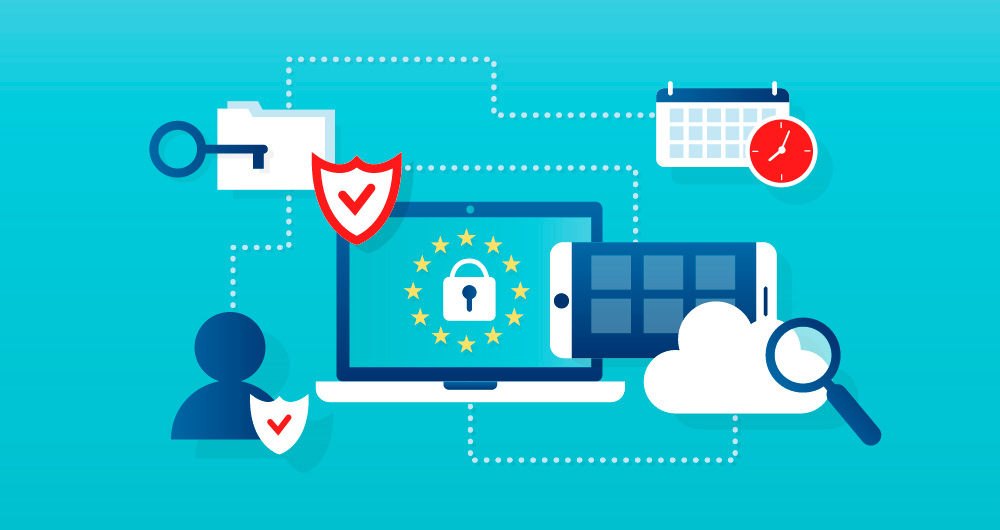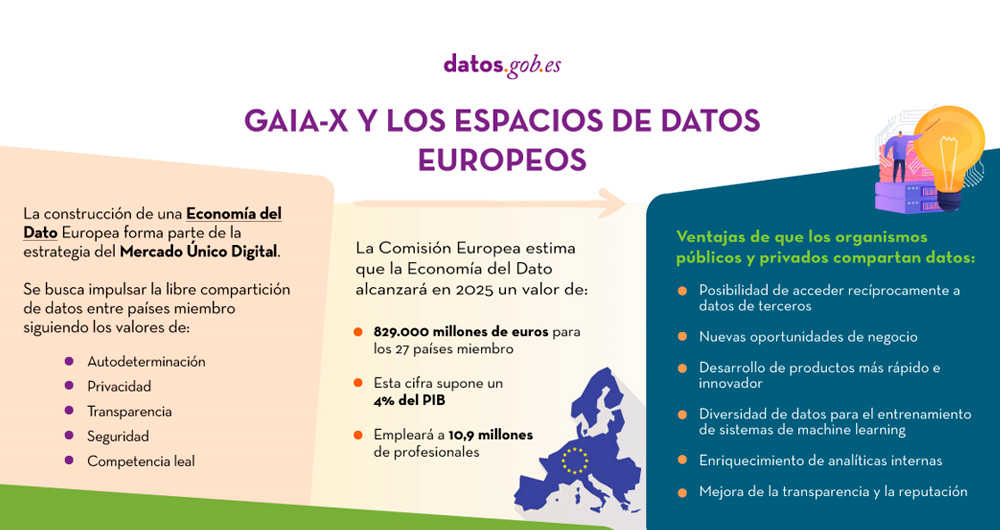
The strong commitment to common data spaces at European level is one of the main axes of the European Data Strategy adopted in 2020. This approach was already announced in that document as a basis, on the one hand, to support public policy momentum and, on the other hand, to facilitate the development of innovative products and services based on data intelligence and machine learning.
However, the availability of large sectoral datasets required, as an unavoidable prerequisite, an appropriate cross-cutting regulatory framework to establish the conditions for feasibility and security from a legal perspective. In this regard, once the reform of the regulation on the re-use of public sector information had been consolidated, with major innovations such as high-value data, the regulation on data governance was approved in 2022 and then, in 2023, the so-called Data Act. With these initiatives already approved and the recent official publication of the Artificial Intelligence Regulation, the promotion of data spaces is of particular importance, especially in the public sector, in order to ensure the availability of sufficient and quality data.
Data spaces: diversity in their configuration and regulation
The European Data Strategy already envisaged the creation of common European data spaces in a number of sectors and areas of public interest, but at the same time did not rule out the launching of new ones. In fact, in recent years, new spaces have been announced, so that the current number has increased significantly, as we shall see below.
The main reason for data spaces is to facilitate the sharing and exchange of reliable and secure data in strategic economic sectors and areas of public interest. Thus, it is not simply a matter of promoting large datasets but, above all, of supporting initiatives that offer data accessibility according to suitable governance models that, ultimately, allow the interoperability of data throughout the European Union on the basis of appropriate technological infrastructures.
Although general characterisations of data spaces can be offered on the basis of a number of common notes, there is a great diversity from a legal perspective in terms of the purposes they pursue, the conditions under which data are shared and, in particular, the subjects involved.
This heterogeneity is also present in spaces related to the public sector, i.e. those in which there is a prominent role for data generated by administrations and other public entities in the exercise of their functions, to which, therefore, the regulation on reuse and open data approved in 2019 is fully applicable.
Which are the European public sector data spaces?
In early 2024, the second version of a European Commission working document was published with the dual objective of providing an updated overview of the European policy framework for data spaces and also identifying European data space initiatives to assess their maturity and the main challenges ahead for each of them.
In particular, as far as public administrations are concerned, four data spaces are envisaged: the legal data space, the public procurement data space, the data space linked to the technical "once only" system in the context of eGovernment and, finally, the security data space for innovation. These are very diverse initiatives which, moreover, present an uneven degree of maturity, so that some have an advanced level of development and solid institutional support, while other cases are only initially sketched out and have considerable effort ahead for their design and implementation.
Let us take a closer look at each of these spaces referred to in the working paper.
1. Legal data space
It is a data space linked to legislation and jurisprudence generated by both the European Union and the Member States. The aim of this initiative is to support the legal professions, public administrations and, in general, to facilitate access to society in order to strengthen the mechanisms of the rule of law. This space has so far been based on two specific initiatives:
- One concerning information on officially published legislation, which has been articulated through the European Legislation Identifier-ELI. It is a European standard that facilitates the identification of rules in a stable and easily reusable way as it describes legislation with a set of automatically processable metadata, according to a recommended ontology.
- The second concerns decisions taken by judicial bodies, which are made accessible through an European system of unique identifiers called ECLI (European Case Law Identifier) that is assigned to the decisions of both European and national judicial bodies.
These two important initiatives, which facilitate access to and automated processing of legal information, have required a shift from a document-based management model (official gazette, court decisions) to a data-based model. And it is precisely this paradigm shift that has made it possible to offer advanced information services that go beyond the legal and linguistic limits posed by regulatory and linguistic diversity across the European Union.
In any case, while recognising the important progress they represent, there are still important challenges to be faced, such as facilitating access by specific precepts and not by normative documents or, among others, the availability of judicial documents on the basis of the rules they apply and, also, the linking of the rules with their judicial interpretation by the various judicial bodies in all States. In the case of the latter two scenarios, the challenge is even greater, as they would require the automated linking of both identifiers.
2. Public procurement data space
This is undoubtedly one of the areas with the greatest potential impact, given that in the European Union as a whole, it is estimated that public entities spend around two trillion euros (almost 14% of GDP) on the purchase of services, works and supplies. This space is therefore intended not only to facilitate access to the public procurement market across the European Union but also to strengthen transparency and accountability in public procurement spending, which is essential in the fight against corruption and in improving efficiency.
The practical relevance of this space is reinforced by the fact that it has a specific official document that strongly supports the project and sets out a precise roadmap with the objective of ensuring its deployment within a reasonable timeframe. Moreover, despite limitations in its scope of application (there is no provision for extending the publication obligation to contracts below the thresholds set at European level, nor for contract completion notices), it is at a very advanced stage, in particular as regards the availability of a specific ontology which facilitates the accessibility of information and its re-use by reinforcing the conditions for interoperability.
In short, this space is facilitating the automated processing of public procurement data by interconnecting existing datasets, thus providing a more complete picture of public procurement in the European Union as a whole, even though it has been estimated that there are more than 250,000 contracting authorities awarding public contracts.
3. Single Technical System (e-Government)
This new space is intended to support the need that exists in administrative procedures to collect information issued by the administrations of other States, without the interested parties being required to do so directly. It is therefore a matter of automatically and securely gathering the required evidence in a formalised environment based on the direct interconnection between the various public bodies, which will thus act as authentic sources of the required information.
This initiative is linked to the objective of addressing administrative simplification and, in particular, to the implementation of:
- Commission Implementing Regulation (EU) 2022/1463 of 5 August 2022 laying down the technical and operational specifications of the technical system for the automated cross-border exchange of evidence and the implementation of the "only once" principle.
- Regulation (EU) of the European Parliament and of the Council of 13 March 2024 laying down measures to ensure a high level of public sector interoperability throughout the Union (the Interoperable Europe Regulation), which aims to establish a robust governance structure for interoperability in the public sector.
4. Security data space for innovation
The objective here is to improve law enforcement authorities' access to the data needed to train and validate algorithms with the aim of enhancing the use of artificial intelligence and thus strengthening law enforcement in full respect of ethical and legal standards.
While there is a clear need to facilitate the exchange of data between Member States' law enforcement authorities, the working paper emphasises that this is not a priority for AI strategies in this area, and that the advanced use of data in this area from an innovation perspective is currently relatively low.
In this respect, it is appropriate to highlight the initiative for the development of the Europol sandbox, a project that was sponsored by the decision of the Standing Committee on Operational Cooperation on Internal Security (COSI) to create an isolated space that allows States to develop, train and validate artificial intelligence and machine learning models.
Now that the process of digitisation of public entities is largely consolidated, the main challenge for data spaces in this area is to provide adequate technical, legal and organisational conditions to facilitate data availability and interoperability. In this sense, these data spaces should be taken into account when expanding the list of high-value data, along the lines already advanced by the study published by the European Commission in 2023, which emphasises that the data ets with the greatest potential are those related to government and public administration, justice and legal matters, as well as financial data.
Content prepared by Julián Valero, Professor at the University of Murcia and Coordinator of the "Innovation, Law and Technology" Research Group (iDerTec). The contents and points of view reflected in this publication are the sole responsibility of the author.


